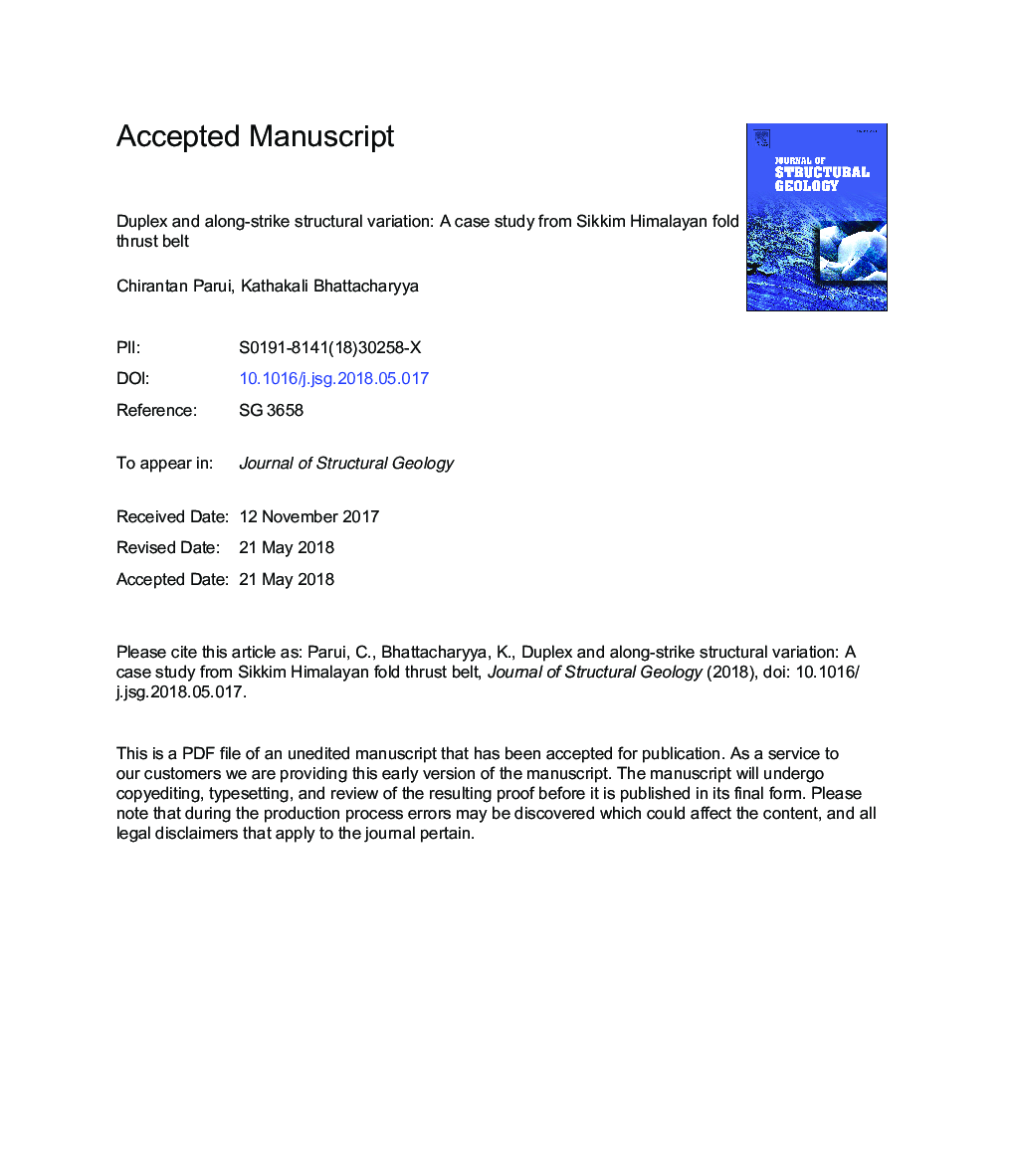| کد مقاله | کد نشریه | سال انتشار | مقاله انگلیسی | نسخه تمام متن |
|---|---|---|---|---|
| 8914373 | 1640467 | 2018 | 55 صفحه PDF | دانلود رایگان |
عنوان انگلیسی مقاله ISI
Duplex and along-strike structural variation: A case study from Sikkim Himalayan fold thrust belt
ترجمه فارسی عنوان
تنوع ساختاری دوطرفه و همراه با اعتصاب: مطالعه موردی از کمربندهای رانش سیکیم هیمالیا
دانلود مقاله + سفارش ترجمه
دانلود مقاله ISI انگلیسی
رایگان برای ایرانیان
موضوعات مرتبط
مهندسی و علوم پایه
علوم زمین و سیارات
زمین شناسی
چکیده انگلیسی
The Sikkim Lesser Himalayan fold thrust belt records along-strike structural variations over â¼15â¯km. The lower Lesser Himalayan (Rangit) duplex (LHD) is blind, and the overlying Pelling and Ramgarh thrust sheets are more intensely folded and preserved in eastern Sikkim than in western Sikkim. A retrodeformable, regional balanced cross-section reveals a minimum shortening of â¼403â¯km (â¼80%) with an average long-term shortening rate of â¼18â¯mm/yr in the eastern transect. Comparison with published data indicates that eastern Sikkim records â¼47â¯km lesser shortening. In western Sikkim, an â¼2â¯km high footwall Main Himalayan thrust (MHT) ramp below the Rangit duplex caused higher structural culmination exposing the duplex. In contrast, an â¼0.35â¯km high ramp below the Rangit duplex in eastern Sikkim did not create sufficient culmination to expose the duplex, causing along-strike discontinuous duplex exposure. The LHD with a blind component, and having fewer (11) but gentler dipping (â¼40°) horses transferred more displacement to the roof thrust in eastern Sikkim than the twelve, steeper dipping (â¼60°) horses in western Sikkim. Lateral variations in location and height of footwall MHT ramp, initial width of the Lesser Himalayan basin, and presence of a lateral ramp explain the structural variation in Sikkim.
ناشر
Database: Elsevier - ScienceDirect (ساینس دایرکت)
Journal: Journal of Structural Geology - Volume 113, August 2018, Pages 62-75
Journal: Journal of Structural Geology - Volume 113, August 2018, Pages 62-75
نویسندگان
Chirantan Parui, Kathakali Bhattacharyya,
